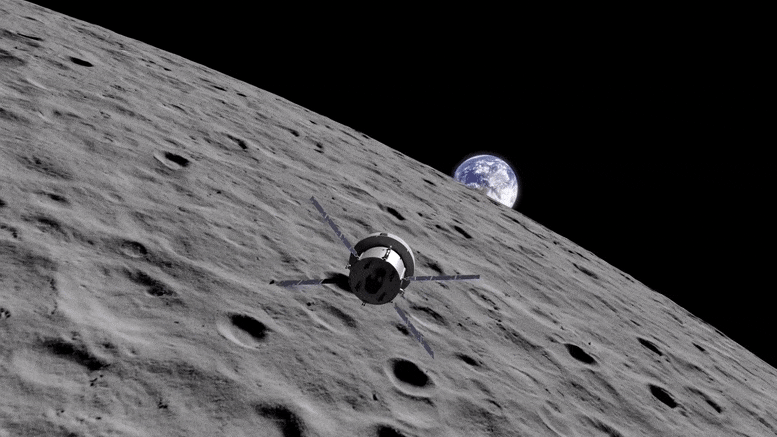
These sensitive cameras take pictures of the star field around Orion, the Moon, and Earth, and compare the pictures to their built-in map of stars.
The Optical navigation camera is a secondary camera that takes images of the Moon and Earth to help orient the spacecraft by looking at the size and position of the celestial bodies in the image.
Once certified, the camera also can help Orion autonomously return home if it were to lose communication with Earth.
Artemis I will be the first integrated flight test of NASA’s deep space exploration system: the Orion spacecraft, Space Launch System (SLS) rocket and the ground systems at Kennedy Space Center in Cape Canaveral, Florida.The first in a series of increasingly complex missions, Artemis I will be an uncrewed flight that will provide a foundation for human deep space exploration, and demonstrate our commitment and capability to extend human existence to the Moon and beyond.
During this flight, the uncrewed Orion spacecraft will launch on the most powerful rocket in the world and travel thousands of miles beyond the Moon, farther than any spacecraft built for humans has ever flown, over the course of about a three-week mission.
Engineers in mission control will uplink large data files to Orion to better understand how much time it takes for the spacecraft to receive sizeable files.During the mission, flight controllers use the Deep Space Network to communicate with and send data to the spacecraft, but testing before the flight hasn’t included using the network.
The test will help inform engineers’ understanding of whether the spacecraft uplink and downlink capability is sufficient to support human rating validation of end-to-end communication prior to Artemis II, the first flight with astronauts.
During Artemis I, Orion will venture thousands of miles beyond the moon during an approximately three-week mission.Engineers hope to characterize the alignment between the star trackers that are part of the guidance, navigation, and control system and the Orion inertial measurements units, by exposing different areas of the spacecraft to the Sun and activating the star trackers in the different thermal states.During speed mode, the radiator pumps operate at a constant speed to help limit vibrations and is the primary mode used during Artemis I and during launch for all Artemis flights.
This objective will test the control mode to provide additional data about how it operates in space.
Orion is NASA’s next spacecraft to send humans into space.
Liquid propellant kept in tanks on the spacecraft moves differently in space than on Earth because of the lack of gravity in space.Propellant motion, or slosh, in space is hard to model on Earth, so engineers plan to gather data on the motion of the propellant during several planned activities during the mission.
This artist’s rendering shows an aerial view of the liftoff of NASA’s Space Launch System (SLS) rocket.During entry of the spacecraft through Earth’s atmosphere, a prescribed series of 19 reaction control system firings on the crew module will be done to understand performance compared to projected data for the sequenceAmmonia boilers are used to help control the thermal aspects of the spacecraft to keep its power and avionics systems cool and keep the interior of the crew module at a comfortable temperature for future crews
This is critical as it is NASA’s spacecraft that will take humans to deep space for years to come
